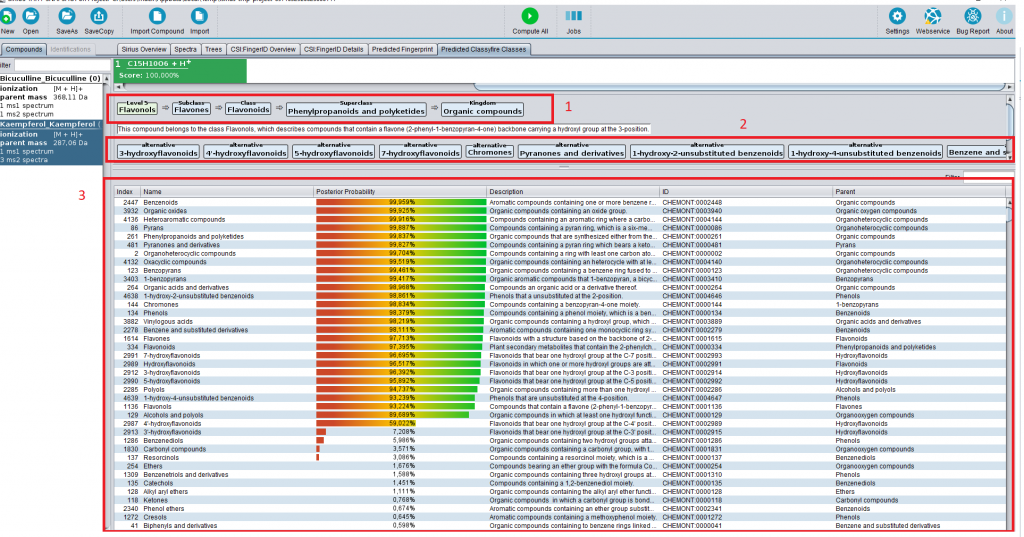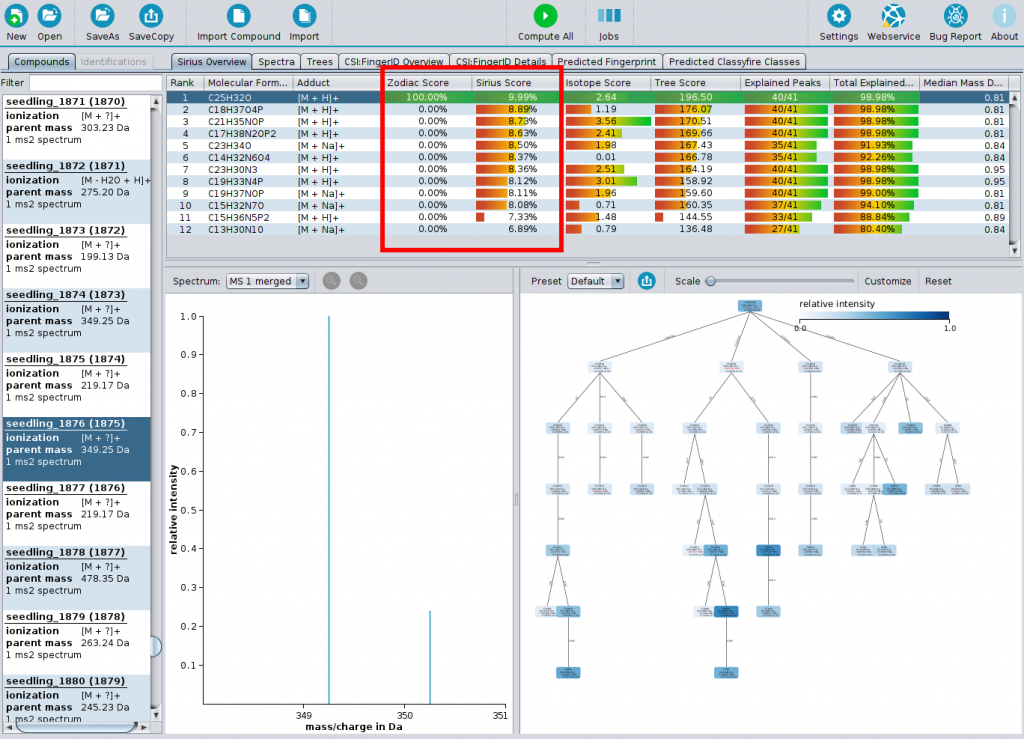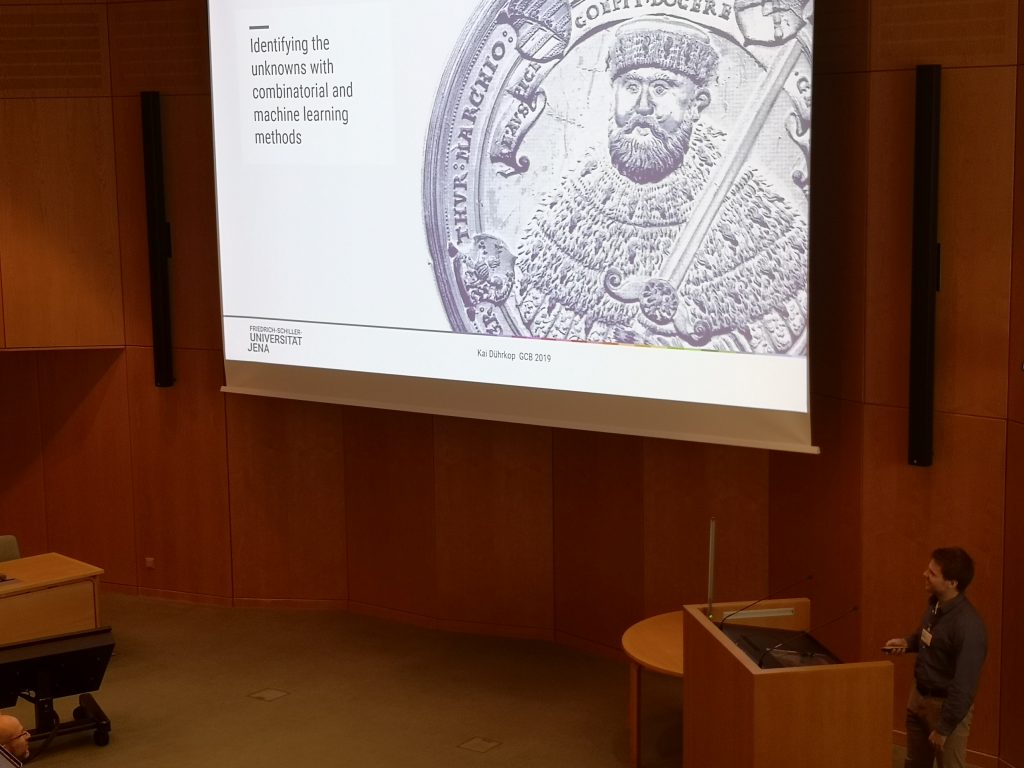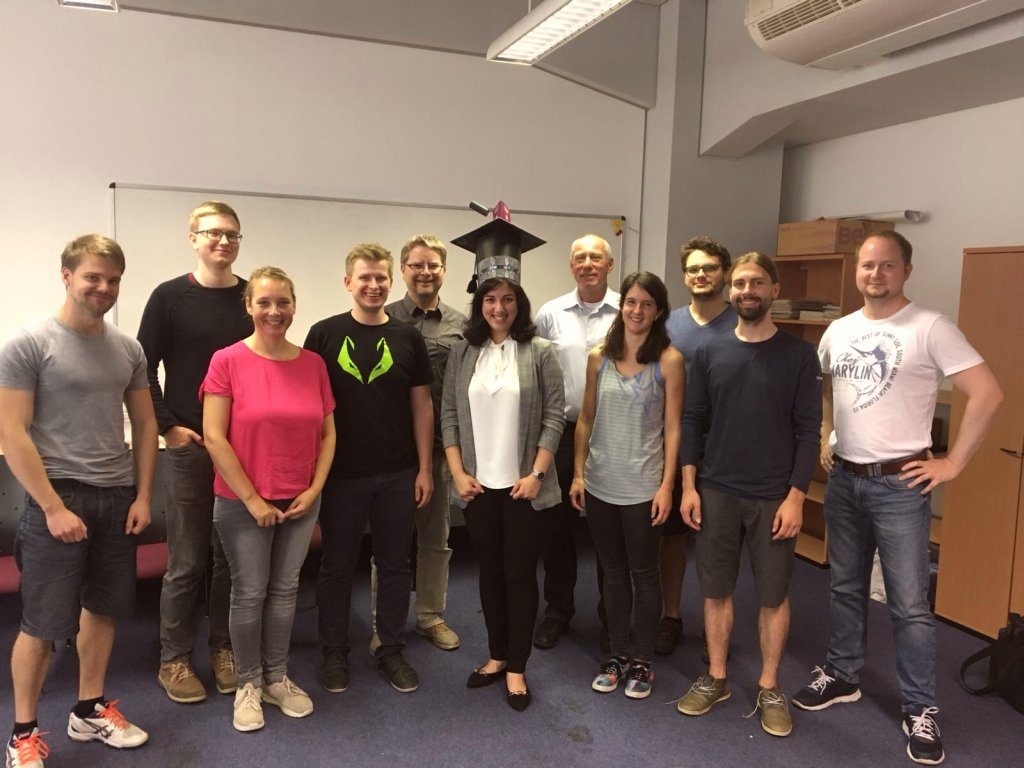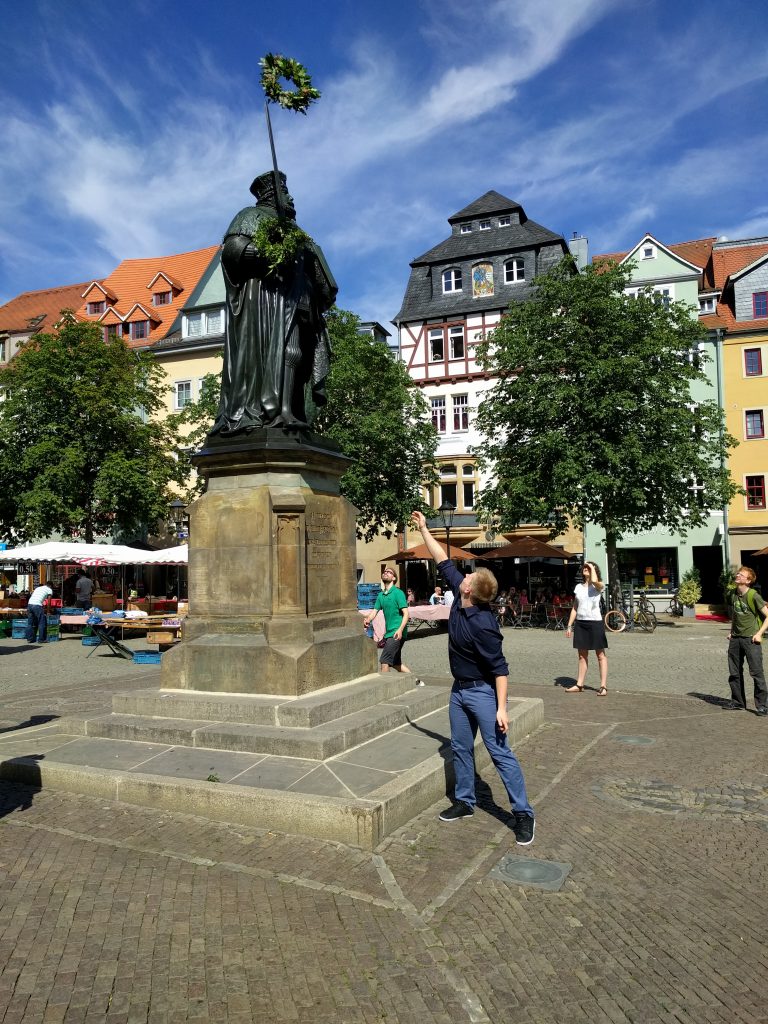Congratulations to Louis-Félix Nothias from the group of Pieter Dorrestein: The article “Feature-based molecular networking in the GNPS analysis environment” has appeared in Nature Methods, and we are happy to be part of this research. (We are lacking behind a little bit with our news.)
In short, FBMN introduces chromatography separation into the molecular networking workflow of GNPS; features with similar mass (and potentially similar MS/MS) but different retention time are now treated separately. See the article for details.
Full citation: L.-F. Nothias, D. Petras, R. Schmid, K. Dührkop, J. Rainer, A. Sarvepalli, I. Protsyuk, M. Ernst, H. Tsugawa, M. Fleischauer, F. Aicheler, A.A. Aksenov, O. Alka, P.-M. Allard, A. Barsch, X. Cachet, A.M. Caraballo-Rodriguez, R.R. Da Silva, T. Dang, N. Garg, J.M. Gauglitz, A. Gurevich, G. Isaac, A.K. Jarmusch, Z. Kameník, K.B. Kang, N. Kessler, I. Koester, A. Korf, A. Le Gouellec, M. Ludwig, C. Martin H., L.-I. McCall, J. McSayles, S.W. Meyer, H. Mohimani, M. Morsy, O. Moyne, S. Neumann, H. Neuweger, N.H. Nguyen, M. Nothias-Esposito, J. Paolini, V.V. Phelan, T. Pluskal, R.A. Quinn, S. Rogers, B. Shrestha, A. Tripathi, J.J.J. van der Hooft, F. Vargas, K.C. Weldon, M. Witting, H. Yang, Z. Zhang, F. Zubeil, O. Kohlbacher, S. Böcker, T. Alexandrov, N. Bandeira, M. Wang, and P.C. Dorrestein. Feature-based molecular networking in the GNPS analysis environment. Nat Methods 17(9):905–908, 2020.
